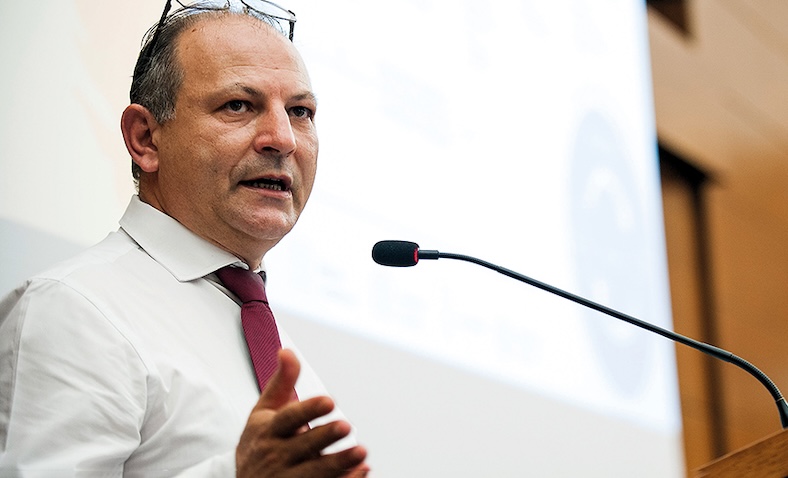Openness and implementation of the Final Synod Document

Circularity
in the Synodal DesignTheirry Bonaventura
The author is the communication manager for the General Secretariat of the Synod of Bishops.
One principle governing the synodal process since the consultation phase of the People of God, has been circularity, that is, the principle that what comes from the grassroots must return to the grassroots. After the month-long pastoral discernment phase, in which the XVI Ordinary General Assembly of the Synod of Bishops identified key issues for the Church in conforming to her synodal nature, the third phase of implementation is marked by the return to the people of God of the fruits of this discernment, expressed in the Final Document.
The first protagonists of this “return” were clearly the Assembly participants. They felt the need to recount their experience to the various assemblies of their respective bishops’ conferences and during academic meetings, conferences, workshops, and press conferences. Particularly significant were initiatives by some sister Churches present in Rome via a video conference, in which fraternal delegates themselves present at the Assembly recounted their experience.
Reception of the Final Document and “schools of synodality.” Local churches and ecclesial communities are active in fostering receptivity of the Final Document. Before being a collection of requests and recommendations, the Final Document is primarily proof of a discernment process made under the guidance of the Holy Spirit, of a journey by which the People of God regained the synodal style of being Church. Thus, since November 2024, work at the local church level has been twofold: ensuring the Final Document’s content is accessible through translations, summaries, and written, oral or video presentations, and a focus on an understanding of how to read the Final Document in order to fully value the synodal style of the Church emerging from it.
It is a daunting task taken up by many ecclesial realities, with a recognition of the need to go beyond mere reform of ecclesial structures or procedures. There is an understanding that structural and procedural transformations, while necessary, presuppose a radical conversion of hearts and minds first. From here, come many initiatives that place the theme of formation at the center, through the fostering of true “schools of synodality”. These ‘schools’ are occurring at the local level, like in the dioceses of Dakar and Hong Kong, at the national level as in the UK, and even internationally in the form of programs like that at Sophia University Institute in Loppiano Italy. Far-reaching training activities relative to the Final Document can be found nearly everywhere and go hand in hand with the strengthening of diocesan networks responsible for synodality and facilitator training. This is especially true in the context of the Conversations in the Spirit, and is a practice which is becoming increasingly common at all levels of Church life.
Interpretation of the Final Document in its own context: The heart of this ‘return’ in the circularity is the work of interpreting the Final Document in varying local contexts. Many dioceses have begun this work and it is bearing significant fruit for the implementation of synodality at the local level. Because of the awareness, too, that not all of the final Document recommendations pertain to all local churches, local context is particularly important. For example, this is why the Diocese of San Diego (United States) organized days of reflection on how to make the parish a more welcoming place through more synodal leadership, while the Archdiocese of Lima (Peru) instead felt the need to create a Guide for the implementation of synodical assemblies in parishes throughout the diocese.
There are many examples of local community activities now bearing witness to the creativity that the Spirit instills in those who have set out on this journey. At the same time, this new stage of the synodal process also constitutes an opportunity for the local church to continue fostering moments for listening and participation by the People of God, with particular attention given to women and youth.
The Final Document of the Synod is available on the Vatican Website:
https://www.synod.va/content/dam/synod/news/2024-10-26_final-document/ENG—Documento-finale.pdf
Men and Women: Together
April to June 2025
No 27 – 2025/2

